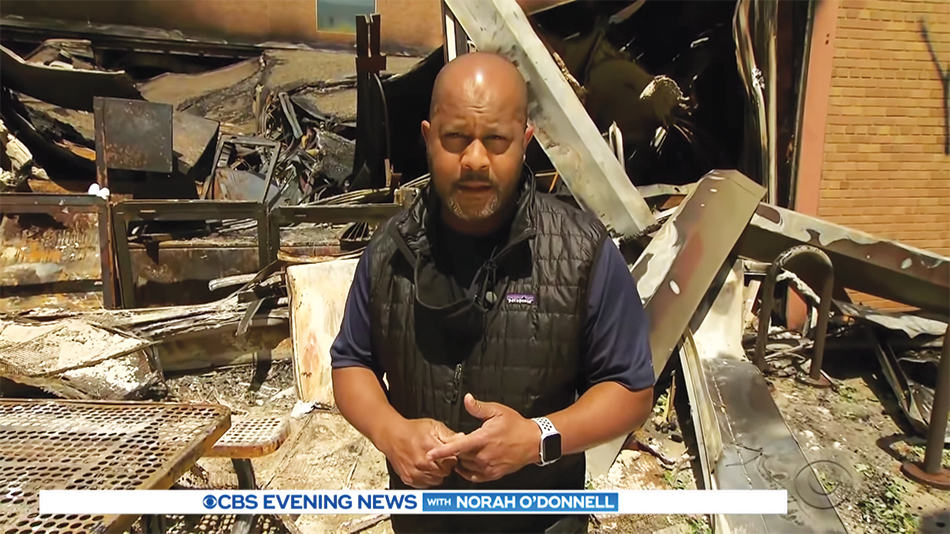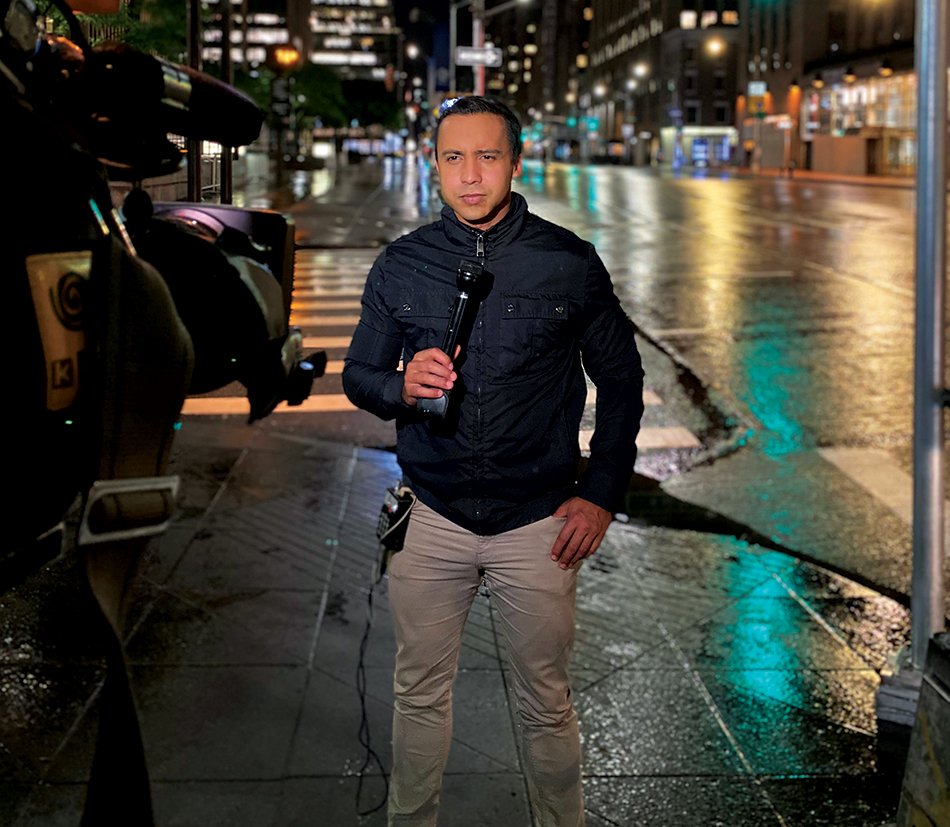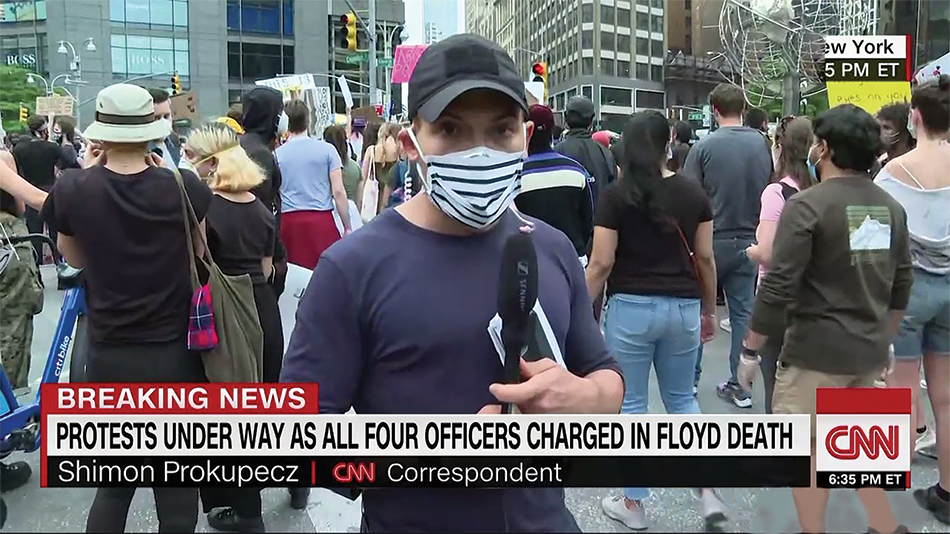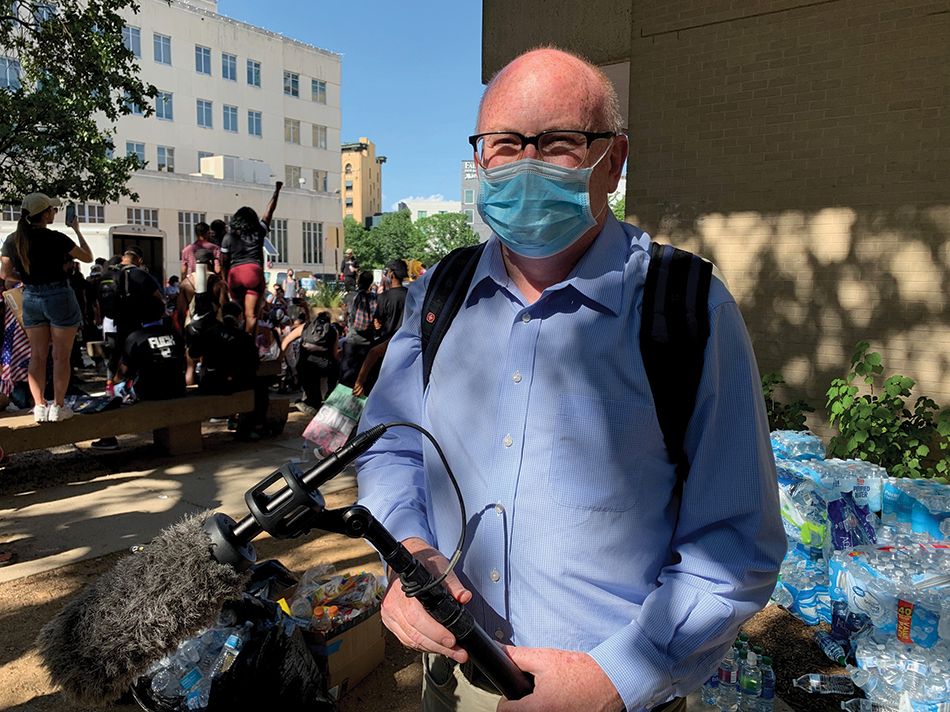Stories of a Lifetime for TV Reporters
Between the COVID-19 pandemic and the nationwide protests related to the death of George Floyd at the hands of a police officer, 2020 has been a virtually endless news cycle for the reporters tasked with covering these giant stories. Many have been on both with little to no time to rest in between. Covering either meant going into hazardous conditions, risking illness and injury.
While no story stays in the news cycle forever, news gatherers said they can’t quite envision more relaxed times arriving anytime soon for those on the front lines. “I feel like we lurched from one story of a lifetime to another,” said Scott Gordon, a reporter at KXAS Dallas-Fort Worth with 35 years in the game. “I’ve covered a lot of big stories in my time, but I’ve never seen anything like this. The sheer magnitude of what’s going on keeps me going. I want to be there to document the history that’s unfolding.”
Corona Crisis
The coronavirus story was elevated to headline news early in 2020 as the pandemic sickening spread, sentencing most people to their homes and shattering the U.S. economy. As one veteran reporter put it, it was the rare story that affected every person in America and beyond. In terms of daily coverage, the pandemic changed the rules of engagement for reporters. Successful reporting is based on the journalist forming a personal connection with sources, often in a matter of minutes. But reporters had to make do with their faces partially covered.

“It’s hard to communicate if you have a mask on,” Jeff Pegues, CBS News chief justice and homeland security correspondent, said. “In some ways, it changes the game for us, but you have to do what you have to do.”
Reporters have also had to contend with social distancing, which has also made establishing personal connections with sources far more challenging. “You can’t shake hands and you can’t put your arm around someone,” said Shimon Prokupecz, crime and justice correspondent for CNN. “It makes the job a whole lot harder.”
Multichannel Newsletter
The smarter way to stay on top of the multichannel video marketplace. Sign up below.
While many of us now work from home, reporters have been out in the field all the while, chasing down stories while trying their best to avoid an invisible enemy. “You play the day back: Was I safe, did I do everything I was supposed to do?” Prokupecz said.
Protests in Cities Large and Small
George Floyd was killed May 25, sparking perfervid protests in all corners of the country. In an online roundtable, former President Barack Obama said the protests are “unlike anything I have seen in my lifetime.” Many reporters shifted on the fly, stepping back from corona coverage to chronicle the protests, and at times the looting, in Washington, New York, Los Angeles and countless other cities large and small. “There was really no break in between, going from one massive, huge story, to another massive, huge story,” ABC News national correspondent Alex Perez said. “There really wasn’t time to think about them in between.” The days are long and reporters are exhausted. (“I can’t believe the impeachment was this year,” one said.) But instead of taking a few days off, they’re all over the latest giant story.

“This year feels like a decade so far,” said Bryan Llenas, Fox News national correspondent. “This is an exhausting time to be doing what we do; it’s physically and emotionally taxing. You feel like you can’t get out of bed, but there’s a lot going on and you hate to be on the sideline.”
Prokupecz said he and his crew walk 20 to 25 miles a day, covering the giant stories in New York. “The team is exhausted, but we feel it’s important to be out there,” he said.
Police Pushback
Making things even more challenging for reporters, many find themselves the targets of rough treatment at the hands of people on the street and even police. A mob of rioters turned on a Fox News crew, which included reporter Leland Vittert, pummeling the journalists outside the White House in late May. WAVE Louisville reporter Kaitlin Rust and photojournalist James Dobson were struck by pepper balls fired by police, causing Rust to exclaim on the air, “I’m getting shot!”
RELATED: BET'S Scott Mills on Providing a Platform
CNN reporter Omar Jimenez was arrested on live TV while working in Minneapolis. An Australian news crew on the street in Washington was attacked by authorities clearing demonstrators from the street near the White House. Freelance photographer Linda Tirado was shot in the eye by a rubber bullet in Minneapolis and is unlikely to regain vision in that eye.

Seven reporters contacted for this story said they’ve mostly been left alone by police and the public while doing their jobs, minus the occasional rocks thrown their way. Several did report people on the street approaching them to express their gratitude, which the reporters said is extremely uncommon in their line of work.
“People have said, I’m so grateful you’re able to tell our stories,” said Jericka Duncan, CBS News correspondent. “I don’t feel like we’ve met with a lot of tension.”
While some in the public echo President Trump’s cries of fake news, many more view reporters as vital to getting the facts out to the masses. “I feel like people are really seeing the value of what we’re doing,” said Garrett Haake, NBC News correspondent, who mentioned “unfailingly positive” feedback from people on the street. “It’s their story and they want it on TV.”
Normal Times Ahead?
Every news story loses its momentum over time, which suggests things may get back to normal for reporters on the front lines at some point in the future. Then again, the presidential election happens in less than five months, and the 24/7 news and social-media cycles are more a part of people’s lives with every passing day. “Like everybody else, I want to get back to normal,” KXAS’s Scott Gordon said. “But I’m not sure what normal is anymore.”

Much as they might like to spend a day in bed, resting after a breathless six months, the reporters on the street for these blockbuster stories said they’re getting by on adrenaline and a renewed sense of purpose. Haake spoke about journalists being there to write the first draft of history. He said, “It’s an honor to have the opportunity to tell this story, at this moment.”
Haake described it as “an inflection point” in the United States. “These stories matter and need to be told,” he said. “It’s a historical moment in this country. As a reporter, these are things you want to be part of.”
Michael Malone is content director at B+C and Multichannel News. He joined B+C in 2005 and has covered network programming, including entertainment, news and sports on broadcast, cable and streaming; and local broadcast television, including writing the "Local News Close-Up" market profiles. He also hosted the podcasts "Busted Pilot" and "Series Business." His journalism has also appeared in The New York Times, The L.A. Times, The Boston Globe and New York magazine.

